Traditional Braces – Sachse, TX
Time-Tested Solution for a Straighter Smile

Are you searching for answers to address misaligned teeth or maybe you require a bite correction? The right choice might be an option you are familiar with. Traditional braces have helped generations of patients upgrade their oral health and grin alike. Regardless of your age, it’s never too late to reap the benefits of this orthodontic treatment. At Sachse Family Dentistry, Dr. Rottman has recommended traditional braces to numerous patients because they are a time-tested solution for a straighter smile. You can discover if braces in Sachse are right for you by calling our dental office to schedule a consultation!
Why Choose Sachse Family Dentistry at Woodbridge for Traditional Braces?
- Compassionate & Caring Dental Team
- Our Focus Is on Patient Comfort
- We Will Maximize Your Dental Insurance Benefits
How Do Traditional Braces Work?
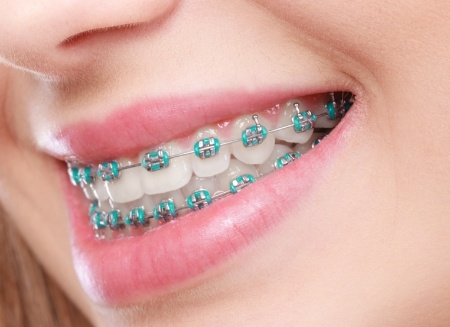
When you visit our office to get braces, we will bond brackets to your teeth. A wire will then connect the brackets. Together, the brackets and wire apply consistent and gentle pressure. As your braces get tightened at periodic appointments, your teeth will move subtly into their proper positions.
Of course, not all treatments with braces are the same. Depending on your unique circumstances, you might require additional orthodontic accessories to achieve optimal results. When you visit us for your consultation, your dentist in Sachse will be able to tell you more about the treatment road you’ll travel.
What Orthodontic Issues Can Braces Fix?
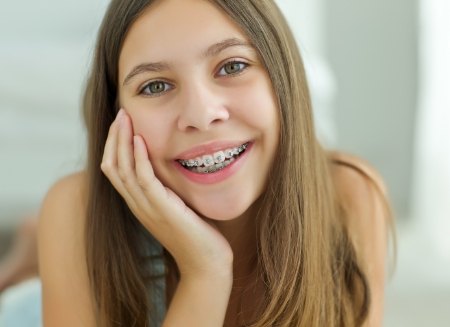
Traditional braces are among the most versatile varieties of orthodontics. They can correct most types of alignment issues from mild aesthetic concerns to severe orthodontic problems that pose a serious threat to your oral health. We commonly use them to address bite misalignment, crowded and crooked teeth, and gapped teeth.
Bite Misalignment
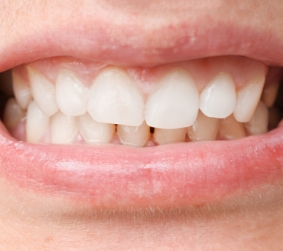
Braces may be used to correct virtually any type of malocclusion (misaligned bite) including overbite, underbite, crossbite, and open bite. Fixing these issues can improve facial appearance, reduce the risk of temporomandibular disorder, and provide other benefits.
Crowded & Crooked Teeth
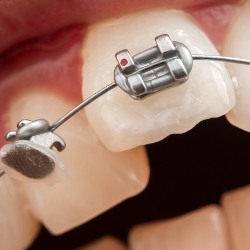
Teeth that overlap can pose challenges for oral hygiene, negatively affect occlusion (how the bite works), and create an aesthetic problem. Traditional braces, along with possible extractions, are often able to correct crowded and crooked teeth. After treatment, each tooth should be straight and have the space needed to function best.
Gapped Teeth
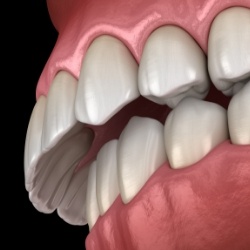
Gapped teeth can make chewing and speaking more difficult than they need to be, plus reduce your confidence in your grin. In some cases, they can also leave the gums vulnerable to damage. Braces are often able to reposition the teeth and close those unsightly spaces.
Caring for Your Braces
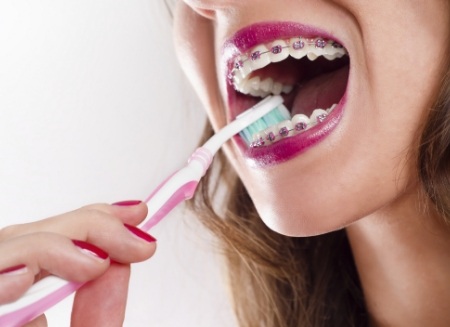
Here are a few basic tips to maximize your treatment results with traditional braces in Sachse:
- Comply with dietary restrictions. Avoiding sticky or hard foods is wise. You should also pass on anything with small bits that might get stuck in your braces like popcorn, for example.
- Maintain your oral hygiene. You may need to use specialized products like a water flosser to thoroughly clean your brackets and wires.
- Attend all scheduled appointments. Regularly visiting our office will increase the chances your treatment remains on course.
Living with Braces

Are you curious what your life with braces will actually look like? If so, you’re in the right place! In this next section, we’re covering how to brush and floss, what changes you’ll need to make to your diet, what to do if a bracket or wire comes out of place, and more. So, keep reading!
Brushing and Flossing with Braces
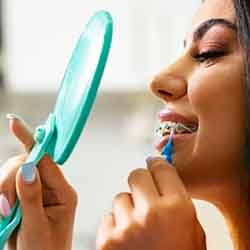
The development of an oral health problem, like a cavity, can lead to unwanted treatment plan delays. That’s one of the many reasons we encourage our patients to commit to a solid oral hygiene regimen! That includes brushing your teeth after each meal as well as flossing and rinsing with mouthwash each night.
Tip: Consider buying special oral hygiene products, like an interproximal toothbrush, if you’re finding the process to be a bit cumbersome!
Eating & Drinking

Since whole apples, raw carrots, tortilla chips, and other crunchy foods place immense pressure on your brackets and wires, we strongly recommend avoiding them during your teeth straightening journey. Instead, focus on finding foods that you genuinely enjoy and are braces-friendly. Mashed potatoes, mac and cheese, vegetable soup, fruit smoothies, scrambled eggs, and oatmeal are all fan favorites.
Note: You can drink juice, soda, and other dark-colored beverages with Invisalign. However, it’s best to use a straw; this will help prevent dental discoloration.
Damaging a Bracket

If one of your brackets gets damaged – whether it’s slightly loose or has fallen completely out of place – the next best step is the same: contact our Sachse dental office. From there, we can schedule a time for you to come in for a visit with Dr. Rottman. We will also give you helpful tips on what to do until you arrive at our office, including sticking to soft foods and covering the bracket with some dental wax.
Poking Wire

A protruding wire can be quite uncomfortable. Plus, there’s a chance that your gums, lips, or tongue will be cut if it’s left that way for an extended period of time, which is why we strongly recommend reaching out to us if you find yourself in this situation. In some cases, we can guide you through what to do over the phone. In other cases, it’s best to come in for a same-day appointment with Dr. Rottman.
Routine Check-Ins
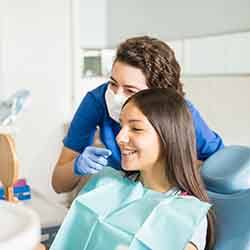
To place continuous pressure on your teeth, your brackets and wires need to be adjusted every month. However, that’s not the only reason your routine check-in visits to our office are crucial. They also allow us to examine the condition of the brackets and wires and, if needed, make adjustments that will help prevent an orthodontic emergency. Plus, they give you an opportunity to ask us any questions you have regarding life with braces!
Traditional Braces FAQs
Am I Too Old to Get Braces?
Many people associate traditional braces with teenagers, but the truth is that people of any age can benefit from orthodontic treatment. If you’re at all unhappy with the alignment of your teeth, you can absolutely get braces to address the issue.
However, it is worth noting that adult’s teeth tend to be more firmly set into the jaw, are are therefore less mobile. This means that braces take longer to work their magic when adults make use of them. Many dental insurance companies also only cover orthodontic treatment for children, so it’s even more important than usual to check with your dental plan if you’re trying to get braces as an adult.
Can I Get Traditional Braces on Just My Top or Bottom Teeth?
Some patients are more concerned about one area of their smile than the other, and are therefore interested in getting braces on just their top or bottom teeth. However, this is generally not recommended.
Straightening teeth does more than just move them laterally; it also pushing them forward or backward. Straightening crooked teeth tends to move them outward, and pulling gapped teeth together tends to draw them in. If you address alignment issues on just the top or bottom teeth, it could cause an overbite or an underbite. While single-arch treatment is occasionally possible, it’s not the sort of thing that you should expect.
Can I Chew Gum with Traditional Braces?
It’s not recommended to chew gum with your traditional braces. It’s common for sticky substances, like gum and candy, to get caught in your braces and cause the teeth to shift in unexpected directions. This change may be so subtle that you don’t even notice it, but can dramatically extend the length of your treatment.
You might have heard that sugar-free gum can have some health benefits, promoting saliva production and reducing risk of tooth decay. While these are some good reason to chew some gum under normal circumstances, it doesn’t make the risk worth it when it comes to your braces.
Why Do My Teeth Feel Loose with Braces?
While patients are generally expecting to feel a little bit sore in the days after they first get their orthodontics, they’re often caught off-guard by the “loose” or “floating” feeling that their teeth have when they first begin to move.
Don’t worry, this is completely normal. For your teeth to move, the ligaments that hold them in place will need to stretch. This causes the teeth to feel like they’re floating on the gums. If you notice this feeling, it’s a sign that your braces are working well and that your teeth are migrating into the correct position. Moreover, you can expect this feeling to fade soon after your braces are removed.
